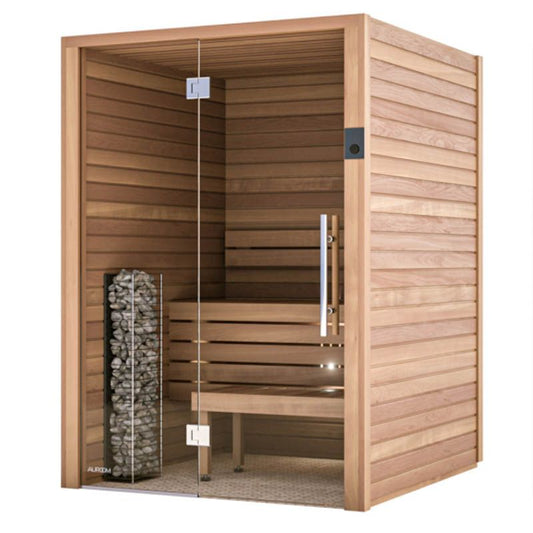Traditional Sauna for Beginners
Table of ContentsThe Facts About Traditional Sauna UncoveredThe 45-Second Trick For Traditional SaunaThe Ultimate Guide To Traditional SaunaNot known Details About Traditional Sauna Traditional Sauna for Beginners
Most of the weight lost in a sauna is water loss and is re-gained upon rehydrating. Without an uncertainty sauna can be an important part of a healthy weight loss program. To take a look at the differences between conventional and IR saunas, I will certainly separate these into proven, academic, and made distinctions.Hence, the best point in the saunawhich is at the ceiling directly above the sauna heateris usually in between 185 and 190 F. Claims that a typical sauna goes beyond 200 F is just not real and not suitable for electric saunas sold in the US. The temperature for a far-infrared sauna is usually established in between 120 and 140 F; however, unlike the typical sauna, the goal in and IR room is not to achieve a heat.

When a typical sauna has been properly warmed, the sauna walls are cozy, the air temperature has actually achieved established temperature and the rocks are incredibly heated. As an intriguing side note, the heated wall surfaces and the rocks are discharging far-infrared heat, incorporated with the heated air, to develop an "enveloping warm".
Traditional Sauna Fundamentals Explained
When the heat is achieved, the aspects cycle on and off to preserve the heat. Most standard sauna customers delight in putting water over the rocks to develop vapor to raise sauna humidity levels. The advantages of putting water over the rocks consist of: making the room much more comfy, dampening the nasal flows, and allowing the use of aromatherapy by blending crucial oils with the water.

When the power gets in the body, it creates the body temperature level to raise and inevitably leads to sweating. In an infrared sauna it is necessary for the emitters/heaters to stay on nearly regularly. Considering that there is no mass of rocks to maintain warmth, the sauna will cool down if the emitters shut off.
Facts About Traditional Sauna Revealed
As pointed out above, the sauna bather in an infrared area more intends to position himself in front of running emitters to obtain maximum advantage from the heat. The home heating time for the two areas can be very various, depending upon just how the spaces are made use of. For a typical sauna, a bather ought to permit 30-40 minutes for the area to accomplish a wanted temperature and to properly pre-heat the rocks.

A well constructed sauna will commonly achieve a temperature level of 150-160 F in concerning 30-40 minutes (Traditional Sauna). For hotter temperatures, the area may need to warm for a longer duration. When the area attains established temperature level, the heating system will cycle on and off, normally running about 50% of the time. The protected wall surfaces and the warmed rocks will keep the space warm and at secure temperature levels.
To some, 15 minutes was "thrown away" while the infrared power heated the wood panels instead of heating a body, while others discover a pre-heated space to be a lot more comfy and think an elevated beginning temperature is needed to start sweating. The length of suggested use for every space is around the very same (10-15 mins per session); nevertheless, because of the lower air temperatures and the ability to feel the effects of infrared heat faster than a traditional sauna, it is not unusual for an individual to invest an overall of 20-30 minutes in an infrared sauna.
Facts About Traditional Sauna Uncovered

The ordinary expense per kWH of electricity in the united state is approximately $0.11, so a 4.5 kW heating unit will certainly cost around $.50 to run for one hour, if the heating system runs continuously for one hour. Typically a sauna heating unit will certainly compete 75% of the first hour and 50% of succeeding hours on since the elements cycle once the set temperature is attained.
A two person far-infrared space is generally physically smaller than a typical sauna, frequently regarding 4' x 4' or smaller sized. The IR heater is typically 1.5-1.7 kW using a 120 volt 15 amp plug-in service. Considering that the area can be made use of sooner than a sauna room, we will assume the space is used for to of an hour consisting of heat up time.
Finally, there is a seldom talked about difference in the social experience between the two spaces. While our culture has shed several of the social advantage of the typical find out this here sauna experience, it can be really socially rewarding (Traditional Sauna). From family time in the sauna, to heart-felt discussions with loved ones, to sauna partiesthe typical sauna experience can bring about intimate mingling
Not known Facts About Traditional Sauna
The majority of greater end infrared areas include colored light therapy, stereo and full-glass fronts. The dimension of a lot of rooms permit for 2 individuals to conveniently make use of the space, while some designs might enable a third their explanation or fourth person to make use of the space. Custom infrared areas are also readily available, with space dimensions offered up to 7' x 8' x 7' high.
 Scott Baio Then & Now!
Scott Baio Then & Now! Tia Carrere Then & Now!
Tia Carrere Then & Now! Jennifer Love Hewitt Then & Now!
Jennifer Love Hewitt Then & Now! Morgan Fairchild Then & Now!
Morgan Fairchild Then & Now! Terry Farrell Then & Now!
Terry Farrell Then & Now!